

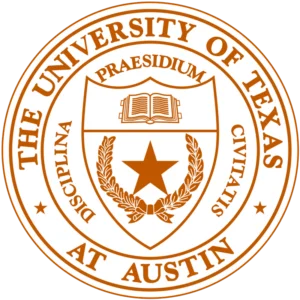


Scholarships for college students are a fantastic way to alleviate the financial burden of higher education. With the rising costs of tuition, textbooks, and living expenses, many students find themselves struggling to make ends meet. However, there is a glimmer of hope in the form of free scholarships that can help ease the financial strain.
In this comprehensive list, we have compiled the top 50 free scholarships available for college students in 2024. These scholarships cover a wide range of fields, including STEM, arts, humanities, and social sciences. Whether you're pursuing a degree in engineering, nursing, or journalism, there is a scholarship out there tailored to your specific interests and talents.
Amount: $25,000
Deadline: Rolling monthly
Eligibility:
-Open to all college students!
Amount: $2,000
Deadline: Last day of each month
Eligibility:
Sallie will award $2,000 each month to eligible entrants. No essay or account profiles required.
Amount: $2,500
Deadline: Expires on the last day of each month
Eligibility: The ScholarshipPoints Scholarship is a monthly no essay scholarship open to all high school and college students ages 16 and older, who are US residents!
Amount: $50,000
Deadline: Expires on the 28th or 29th of each month
Eligibility: The ScholarshipOwl Scholarship is a monthly no essay scholarship open to all high school and college students ages 16 and older, who are US residents!
Amount: $1,000
Deadline: End of each month
Eligibility:
-Open to legal residents of the US who are 13 and older.
Amount: $25,000
Deadline: Continuous
Eligibility:
-Open to all students! The $25,000 “Be Bold” Scholarship is a no-essay scholarship that will be awarded to the applicant with the boldest profile.
Amount: Varies
Deadline: Continuous
Although not a scholarship, be sure to take advantage if you're looking to make a few extra bucks this upcoming semester, sign up to take surveys!
Amount: $1,000
Deadline: September 30, December 31, March 31, June 30
Eligibility:
-Open to high school, college, and graduate school students of all years
-Must be a US citizen/permanent resident, a student with DACA status, or an international student studying in the US.
PS - this is one of our very own easy scholarships. Head over to our no essay scholarships post for more!
Amount: $2,000
Deadline: Rolling monthly
Eligibility:
-Open to all college students!
Amount: $1,000
Deadline: January 1, April 1, July 1, October 1
Eligibility:
-Minimum 3.6 GPA
-Must be currently enrolled in a US high school or college
-One scholarship is specific to STEM students, and the other scholarship is open to students of all majors!
Amount: Up to $25,000
Deadline: January 3
Eligibility:
-Open to students (ages 16-26) who are passionate about creating a better future and making a positive impact on their community
-Must be a US citizen/permanent resident
Amount: $36,000
Deadline: January 5
Eligibility:
-Open to US residents ages 13-19
-Must self-identify as Jewish
-Must be serving in a leadership role on a project aimed at repairing the world
Amount: Varies by scholarship
Deadline: January 6
Eligibility:
-Must be a high school senior or current college student from one of the following states: Alaska, Idaho, Montana, Oregon, Washington
-Must either identify as LGBTQ or be a straight ally
-Must have demonstrated financial need
Amount: $500
Deadline: January 11
Eligibility:
-Must be attending an accredited US college or university
-Must be a US citizen
Amount: Varies
Deadline: February 1
Eligibility:
-Open to US citizens who are high school graduates, 18 years of age or older
-Must be planning to study in an overseas program in a country outside of Western Europe, Canada, Australia, or New Zealand
Amount: $500 - $5,000
Deadline: February 14
Eligibility:
-Open to the following students: high school seniors, undergraduate, transfer, and graduate students
-Must be of Hispanic heritage
-Must be a U.S. citizen, permanent legal resident, or have DACA status
-Minimum of 3.0 GPA on a 4.0 scale (or equivalent) for high school students; minimum of 2.5 GPA on a 4.0 scale (or equivalent) for college and graduate students
-Must submit the FAFSA or state-based financial aid forms
Amount: Full-tuition (doesn't include books or room and board)
Deadline: February 15
Eligibility:
-Applicants must be living in the United States and the college or university they attend must be located in the United States, however, US citizenship is not required
-Minimum 3.7 GPA
-Open to high school seniors and students currently attending four-year colleges and universities
Amount: $5,000 - $10,000
Deadline: February 20
Eligibility:
-Must be a graduating high school senior
-Must promote vegetarianism in your community and show a commitment to a vegetarian diet/lifestyle
Amount: $2,500
Deadline: February 28
Eligibility:
The TLF Undergraduate Scholarships are open to minority students studying advertising, marketing, public relations, or a related field.
Amount: $5,000
Deadline: March 7
Eligibility:
The scholarship annually provides up to $5,000 per year in renewable scholarships to undergraduate students. To qualify, individuals must be eligible for a Federal Pell Grant, have a minimum financial need of $2,500, and have a minimum 2.5 GPA.
Amount: $1,000
Deadline: March 11
Eligibility:
-Must be between 17 and 35 years old
-Must attend a 2-year or 4-year college or university
Amount: $2,000 (5 awards)
Deadline: March 15
Eligibility:
-Any legal U.S. resident who will be a full-time student at a U.S. college or university is eligible to apply
-Applicants must submit their own original short-form video centered around the theme, This Is How I Frame My Future
Amount: $2,500
Deadline: March 31
Eligibility:
-Open to female undergraduate and graduate students studying architecture or landscape architecture in the U.S. and Canada
Amount: $2,500
Deadline: March 31, June 30, September 30, December 31
Eligibility:
-Be enrolled full-time in high school or at least part-time in college, graduate, professional, or trade school
Amount: $10,000
Deadline: April 1
Eligibility:
-The scholarship program is designed to provide opportunities to groups that are traditionally underrepresented in STEM: women, people of color, people with disabilities, individuals who identify as LGBTQ, and those that are or will be first-generation college students
-Must have financial need
-Current or planned 4-year degree enrollment in the following majors: Aerospace Engineering, Computer Engineering, Computer Science, Electrical Engineering, Electrical and Computer Engineering, Industrial Engineering, Mechanical Engineering, or Physics
Amount: $1,000
Deadline: April 30, August 1
Eligibility:
-Open to current students in an eligible undergraduate program, or graduating high school seniors in the U.S., working towards a bachelor’s degree or associate’s degree
-Open to international students studying in the US, as well as students with DACA status
Amount: $500
Deadline: May 1
Eligibility:
-Applicants should be part of the first generation of their family (i.e., parents and grandparents did not attend a college or university) to attend a four-year college program.
-Must be a U.S. Citizen or Permanent U.S. Resident.
-Must be enrolled (or accepted) in an accredited college or university and planning on continuing the next year.
Amount: Varies
Deadline: May 3
Eligibility:
-Open to college sophomores, juniors and seniors majoring in Criminal Justice or related discipline such as social sciences, public administration, computer science, finance, linguistic arts, chemistry, physics, etc., leading to a four-year degree
Amount: Varies
Deadline: May 15
Eligibility:
-Must have 2.5 or higher G.P.A. (unweighted)
-Must be a high school senior, incoming, or current college student to qualify for scholarships.
-Must be majoring in one of the following areas: Culinary Arts, Baking/Pastry, Hospitality Management or Agriculture
-Must attend college/university in the U.S.
Amount: $1,500
Deadline: June 15, December 8
Eligibility:
-Open to students pursuing education in a science-related field (Life Science, Medical Science, Health Science)
-Schools/Colleges/Institutes within the US, Canada, and European Countries only
Amount: Varies
Deadline: June 30, December 30
Eligibility:
-Open to students pursuing degrees in nursing
-Must be a resident of one of the following states: Arizona, Idaho, Minnesota, Montana, North Dakota, Oklahoma, Oregon, South Dakota, Washington, Wisconsin
Amount: $1,000
Deadline: July 16, December 17
Eligibility:
-Student in good standing and enrolled at an accredited college or university
-Declared STEM major
-Open to international students
Amount: $5,000
Deadline: July 20
Eligibility:
-Be accepted at, or enrolled in, a full-time degree program at a U.S. or Canadian school that MPOWER supports
-Be an international student allowed to legally study in the U.S. or Canada (or a student with DACA status)
Amount: up to $3,000
Deadline: July 30
Eligibility:
-Open to current freshmen, sophomores, juniors, seniors, graduate students, or students attending a military academy
-Minimum 3.0 GPA
Amount: $1,000 each (3 awards)
Deadline: July 31
Eligibility:
-Open to current undergraduate and graduate school students.
-No minimum GPA required!
Amount: $1,000
Deadline: August 1
Eligibility:
-Must be a high school senior or undergraduate, graduate, or postgraduate student about to attend or currently attending an accredited college or university in the United States
-Must be a citizen or a legal resident of the United States
Amount: Up to the cost of attendance
Deadline: September 15
Eligibility:
To apply, students must be:
Amount: $20,000
Deadline: October 2
Eligibility:
-Open to currently enrolled high school/home-schooled students attending school in one of the 50 U.S. states, the District of Columbia, Puerto Rico, or select DoD schools who will graduate high school during the academic school year. Award may be used for freshman year of college.
Amount: $2,000
Deadline: September 15, March 15
Eligibility:
-Open to female high school and college students who want to start their own online business
Amount: up to $2,000
Deadline: September 17
Eligibility:
-Different scholarships open to high school, college, and graduate school students
Amount: $2,000
Deadline: September 30
Eligibility:
-Applicants for this scholarship should be enrolled at a public community college, junior college, technical college, or city college, and working towards a certificate, diploma, or degree at the associate’s level or a first-time bachelor’s level
-Must be a US citizen
Amount: $1,000
Deadline: October 31
Eligibility:
-Be a student who is currently studying at or has been accepted to an accredited college or university in the United States.
-Be currently enrolled in a Science, Technology, Engineering, or Mathematics (STEM) degree-granting program OR demonstrate plans to pursue a career in the field of technology after graduation.
-Identify as a woman.
Amount: $2,500
Deadline: November 30
Eligibility:
-Open to college students attending 2-year and 4-year schools as well as trade/technical schools
-Minimum 2.5 GPA
-Must be a US citizen
Amount: Varies
Deadline: December 10
Eligibility:
-Open to college students residing in the US, identifying as members of the LGBTQ community
-Applicants must be U.S. citizens or legal permanent residents
Amount: $2,000
Deadline: December 31
Eligibility:
-Applicants must be under the age of 30
-Applicants must be U.S residents
Applicants must have a minimum GPA of 3.0 on a 4.0 scale
Amount: $1,500
Deadline: Varies
Eligibility:
-The Student-Caregiver Scholarship provides financial assistance to students who are caring for an elderly loved one while enrolled in college
-Applicants must be full-time college students at an accredited two-or-four-year college or university in the United States
Amount: $1,000
Deadline: December 31
Eligibility:
-Open to high school and college students
Amount: Varies ($1,000 - $20,000)
Deadline: Varies by scholarship
Eligibility:
-Scholarships open to Asian/Pacific Islander students in the US
-Minimum 3.0 GPA
-Applicants must be the first in their family to attend college (more details on APF website)
Amount: Varies
Deadline: Varies, but the general application closes annually on March 31.
Eligibility:
-Open to students enrolled full-time and attending UNCF member Institutions
-Must have a demonstrated financial need
-Minimum 2.5 GPA required
Amount: $1,000
Deadline: Rolling
Eligibility:
-Open to full-time students enrolled in two-year, four-year, or graduate programs
-All majors welcome
One of the most prestigious scholarships on our list is the Gates Millennium Scholarship, which provides full tuition coverage for undergraduate and graduate studies. This highly competitive scholarship is awarded to exceptional students who have demonstrated leadership skills, academic
For those interested in the arts, the National Merit Scholarship Corporation offers scholarships to high-achieving students who excel in the PSAT/NMSQT exam. This scholarship not only covers tuition but also provides additional funds for books, supplies, and other educational expenses.
If you're passionate about making a difference in the world, the Coca-Cola Scholars Program is worth considering. This scholarship recognizes students who have shown leadership potential, academic achievement, and a dedication to community service. Recipients of this scholarship receive a substantial financial award to support their college education.
In addition to these well-known scholarships, there are numerous other opportunities available for college students featured above. The Dell Scholars Program, for example, targets students from low-income backgrounds who have overcome significant obstacles to pursue higher education. This scholarship provides financial assistance, mentorship, and other resources to help students succeed academically and professionally.
It's important to note that each scholarship has its own eligibility criteria and application process. Some scholarships may require essays, letters of recommendation, or interviews, while others may focus solely on academic achievements. Therefore, it's crucial to carefully review the requirements and deadlines for each scholarship you're interested in.
Applying for scholarships can be a time-consuming process, but the potential rewards are well worth the effort. Not only can scholarships alleviate the financial burden of college, but they can also open doors to new opportunities and experiences. So, take the time to explore the top 50 free scholarships for college students in 2024 and start your journey towards a brighter future today.
Scholarships for College Students are opportunities that you, as a college student, can apply for to help you cover your high education costs.
Some college scholarships can be put towards anything, whereas others may specify that they can only be put directly towards your tuition.

If searching through this post to find scholarships you're eligible for is not really up your alley, take advantage of our scholarship resource posts that organize opportunities by year in school, ethnicity, gender, and more:
Scholarships for College Freshmen
Scholarships for Community College Students
Scholarships for Graduate Students
Scholarships for LGBTQ+ Students & Allies
Scholarships for Undocumented Students
Scholarships for LatinX and Hispanic Students
Scholarships offered by your college/university: The vast majority of colleges and universities also offer their own college scholarships to both incoming and current students. These awards are often broken down by area of study, but many schools also offer scholarships for things like studying abroad, student leadership, and more.

Listen up! I, Ayden, will be the first person to tell you that private scholarships can be of great help when it comes to paying for your higher education, given that you have your strategy and put in the time and effort.
However, it is super important to also be aware of the other various forms of aid that you might be eligible to receive so you don’t miss out on any opportunities to lessen your college costs. So, in this post, I am going to discuss another common form of aid that tends to get overlooked: state-based aid!
Every state within the US offers its eligible residents at least one, if not multiple, opportunities to get some help in paying for school. While the majority of these state-run programs only require you to have filed your FAFSA in order to be considered, there are some that have additional application requirements and guidelines, or may even ask you to complete a separate application altogether.
Speaking of the FAFSA, have I mentioned the importance of filing early? As I mentioned, a lot of these state-based aid programs require you to have filled out the FAFSA in order to be considered.
In addition to this, state programs sometimes also operate on a first-come, first-serve basis. This essentially means that it is of the utmost importance to complete your FAFSA on time, if not as early as possible, in order to maximize the amount of aid you can possibly receive.
Below, I have outlined most, if not all, of the state-based aid programs and resources that are available to students all across the US. Simply search for your state, and click around to read more on the various forms of aid that you might be eligible to receive.
Amount: $1,000 per quarter
Deadlines: March 31, June 30, September 30, December 31
Eligibility: Open to all high school, college, and graduate students! No essay or minimum GPA required to apply. Open to US citizens, international students in the US, and students with DACA and undocumented status.
Amount: $1,000 twice per year
Deadlines: June 30, December 31
Eligibility: Open to high school students of all years. No essay or minimum GPA required to apply. Open to US citizens, international students in the US, and students with DACA and undocumented status.
The Common Application is an online application that allows students pursuing an undergraduate degree to fill out one singular application to apply to over 900 colleges and universities across the globe. This application makes it easy for first-year applicants to apply to multiple schools without having to juggle the different pieces of completely separate applications.
Just like with any college application, when you prepare to apply to colleges using the Common Application, you will need to get a few things put together before you go ahead and hit "submit."
Some of the key components to your application include your high school transcript, letters of recommendation, activity and involvement lists, and academic honors and achievements. While these are all super important pieces of the puzzle, today we are going to focus in on a completely different section of the application, which is the essays.
On the Common Application, you may notice that there are a few different sections of essays that come up: the personal essay, college-specific questions, and writing supplements. Most colleges and universities that use the Common Application will require you to write the personal essay. The college-specific questions and writing supplement requirements vary across schools; some may require them, others may make them optional, and others may not have any to begin with, which is why some students seek services like WritePaper where they can write my paper for me no AI to ensure originality and meet each school’s unique expectations.
I know I said earlier that this post is going to focus on Common App Essay Prompts, but when I said "essay", I meant, more specifically, the personal essay!
Usually there are around 6 prompt options for the personal essay, which is great because out of the 6, you can pick the one that resonates with you the most and write your essay in response to that prompt. For the 2021-2022 year, the Common App added a 7th prompt.
Here is the full list of the 7 Common App prompts for 2021-2022. Underneath each prompt, I have also bulleted some ideas and suggestions on how to respond to or approach each one.

Some students have a background, identity, interest, or talent that is so meaningful they believe their application would be incomplete without it. If this sounds like you, then please share your story.
The lessons we take from obstacles we encounter can be fundamental to later success. Recount a time when you faced a challenge, setback, or failure. How did it affect you, and what did you learn from the experience?
Reflect on a time when you questioned or challenged a belief or idea. What prompted your thinking? What was the outcome?
Reflect on something that someone has done for you that has made you happy or thankful in a surprising way. How has this gratitude affected or motivated you?
Discuss an accomplishment, event, or realization that sparked a period of personal growth and a new understanding of yourself or others.
Describe a topic, idea, or concept you find so engaging that it makes you lose all track of time. Why does it captivate you? What or who do you turn to when you want to learn more?
Share an essay on any topic of your choice. It can be one you've already written, one that responds to a different prompt, or one of your own design.
There you have it, the 7 Common Application prompts for 2021-2022, accompanied by some brief thought bubbles, dissections, and things to think about!
I know that the process of writing your Common App essay can seem daunting (I wrote mine not too long ago!), but ultimately, after spending some time brainstorming, refining topics and ideas, and chatting with friends and family, I can guarantee that you will come out of the process with an awesome and unique essay that is bound to WOW those admissions people!
If you're looking for more fab resources specifically on writing those college essays, I highly recommend heading over to the College Essay Guy Blog!
Other recommended reading:
Countless numbers of studies over the years have shown that college graduates experience lower levels of unemployment, and earn more, than their non-degree earning counterparts.
In addition to these statistics, there are also several other “pros” of obtaining a degree, such as increased access to job opportunities, personal growth, greater opportunity to build a professional network, and higher levels of job satisfaction, just to name a few.
While this information is good to know, it is also worth noting that obtaining a degree can be expensive. And by expensive, I mean very expensive.

So, for many students across the globe, the conundrum becomes “Is obtaining a degree worth the investment and debt that it is likely to incur?”
This may not be the answer that you want to hear, but the answer that I have for you is that it depends on a few different things. Most careers don’t require you to have a Ph.D., a greater portion will require that you have a bachelor’s degree, yet others might say that an associate’s degree or even a Professional Certificate is just the ticket.
So, before you dive right into a four-year college, or make the decision to go back to school to get your master’s degree, start with a little internal digging, or what I like to call, “soul searching”.
Ask yourself these questions to try to figure out if there is a career path or specific field that you know you want to pursue:

1.What are my interests?
In answering this question, you will want to consider some of the things that you are always game to learn more about and get involved in.
Now, not everyone is able to take the things that they are interested in and turn them into full-time jobs or careers. For example, I love to cook, but you won’t catch me leaving my day job to become a chef! However, depending on where your interests truly lie, taking those interests and incorporating them into your career might be feasible. Maybe you love helping children, in which case, there are tons of jobs and career paths out there that focus on that.
2.What skills do I have?
This question can usually be answered best by thinking back to past experiences that you have had, whether in specific jobs, your academic career, or in your everyday life outside of those areas.
You’ll want to try to come up with a list of both hard skills (i.e. web development, writing, mathematics) and soft skills (i.e. leadership, patience, agreeableness), since skills in both of these areas are key to success in most jobs.
One effective way to assess and develop hard skills is by engaging with structured learning platforms and practice environments, especially for technical fields like IT or cybersecurity. For instance, if you're interested in enhancing your knowledge in areas such as networking or system support, preparing for industry-recognized certifications can be a valuable path. These credentials not only validate your skills but also boost your confidence and job-readiness. You can learn more about how to practice for CompTIA exams and start developing real-world capabilities that employers look for.
3.What are my dreams?
This is the final question you will want to ask yourself. Think about if there is anything in particular that you have always said “Wow, I would love to do that for a career”.
Keep in mind that while some people know what they want to do early on in their lives, a lot of us do not, and it might take time to experience a few different options (and learn from them) in order to narrow down what it is we are actually passionate about.
In asking yourself these questions, and hopefully answering them in as much detail as possible, you are helping to illuminate the way in terms of getting to the bottom of determining which career path is the right one for you.
If this soul-searching activity has led you to make the decision that you will, should, or want to obtain a degree beyond your high school diploma, that’s great! However, you still may be wondering which type of degree is the right one for you.
Below, I have highlighted the main types of degree options that are out there, including key information on what type of student/career each degree is most-suited for and cost considerations to keep in mind.

What it is: Unlike an undergraduate degree, which often requires students to take courses that are not always 100% focused on their established major, a trade school degree or program is one in which you will likely focus solely on learning and becoming good at the trade in which you plan to pursue.
Trade school programs are generally significantly cheaper (usually between $5,000 and $15,000) and shorter than undergraduate degree programs (most can be completed in less than two years).
Who it’s designed for: If you are planning on entering a technical field in which you must have a very specific set of skills, then this could be the option for you. In fields such as HVAC, contracting, massage therapy, and hairstyling, employers put less emphasis on your degree credentials (i.e., where you got it from) and more emphasis on your skillset.
Pros:
-If you know exactly what you want to do and are simply looking to develop the skills you need to become certified for that specific trade, then this route will definitely save you time and money.
Cons:
-These degrees focus less on giving you the “overall package” in terms of learning about lots of different topics and meeting people who are pursuing degrees in other areas.
-By going the trade-school route and obtaining those specific skills, if you ever decide later on down the line that you want to sidestep into a different type of career, you may have to go back to school.
An undergraduate degree, which is typically the next-in-line degree that students will go for after earning a high school diploma, comes in a few different forms.
Usually, an undergraduate degree will consist of “general education” classes (which are broad) and major-specific classes (which are more narrowly focused on what area you want to pursue).
The two main types of undergraduate degrees are Associate (2-year) and Bachelor (4-year).
What it is: The associate degree is a 2-year degree that is normally obtained through community college. As of 2019, there were approximately 940 community colleges all across the United States. Despite this, there are some 4-year colleges and universities and vocational schools which also offer Associate degrees.
Who it’s designed for: The ideal candidates for an associate degree are 1) someone who is looking to approach the college process in a more economical way, and 2) someone who is looking to jump right into the job-world as soon as possible.
Associate degrees are more economical than Bachelor's degrees because the cost of attending a community college is generally much cheaper than attending a four-year college or university (because it is a shorter program and just because of the nature of the schools themselves).
Pros:
-If you are looking to save money and get into the job market ASAP, but you want to earn a degree and pursue a career in a field that is not covered by a trade school certification, then this might be a good option.
-Students can also use an Associate degree as a stepping stone into the Bachelor's degree to save LOTS of money (see “Transfer degree” below).
-Many associate degrees can be accomplished through online programs, which are often not only cheaper but allow you to attend classes virtually.
Cons:
-Depending on where you go for your Associate degree, you may find that the selection for majors is limited.
-Associate degrees (aka, community college) can sometimes be seen as less prestigious than a Bachelor's degree. Unfortunately, prestige is still something that most (but not all) employers consider when looking at your resume to determine potential prospects of employment.
-If you attend a community college, you may find that the atmosphere is not as vibrant or “happening” in comparison to if you were on the campus of a four-year college or university. This could be because many of the students who attend community college choose to commute. While this is great for saving money, it can mean that you will be getting less of the “traditional college experience”.
*Pro-tip: If you think obtaining an online degree might be a good option for you, be sure to do your research on accreditation, aka "the recognition from an accrediting agency that an institution maintains a certain level of educational standards".
What it is: The bachelor's degree is the type of college degree that is most commonly referenced when people talk about “going to college”. According to US News, there are over 4,000 colleges and universities across the US in which you can possibly attend to complete your bachelor's degree.
The bachelor's degree generally takes about 4 years to complete and is a required prerequisite to attending graduate school.
Most bachelor's degrees are composed of three different types of courses: general education, major-specific, and elective.
Who it’s designed for: Unlike associate degrees, there are generally a lot more options for majors and areas of study when you pursue a bachelor's degree. While there are MANY different types of bachelor degrees, the two most common are B.A. (Bachelor of Arts, which is usually liberal arts-focused) and B.S. (Bachelor of Science, which is usually more science-focused).
Most four-year colleges and universities offer hundreds of options for majors that students can pursue. These range from mechanical engineering to economics to psychology to textile and fashion design (just to name a few!).
Pros:
-The bachelor's degree is usually considered to be the degree that employers look for when you are applying for entry-level jobs after graduation.
-When you obtain your bachelor's degree, it generally places you in a higher potential earnings range than if you were to obtain a trade school or associate degree, which can lead to more opportunities for professional advancement, a greater level of job security, etc.
-Whether you live on campus or not, the majority of students who obtain bachelor's degrees from four-year colleges and universities tend to be involved in other activities and organizations that happen on and around campus, which can make it seem more vibrant.
-Oftentimes, there are lots of opportunities to network and meet students from different places who are pursuing degrees that can be vastly different from your own.
-Rather than just taking classes that are relevant to what you want to pursue, the bachelor's degree requires you to take general education classes first, which can be helpful if you are not completely sure what you want to do for your career (I know I wasn’t!).
Cons:
-The most obvious and biggest con to obtaining a bachelor's degree is that it is oftentimes extremely expensive, and has the potential to leave you with a fair amount of debt, depending on your situation.
What it is: The transfer degree is obtained when you start out attending a community college and, once you complete your associate degree at a community college, you can then transfer to a four-year college or university to attend for your junior and senior year.
Who it’s designed for: The transfer degree is designed for students who want to graduate with a bachelor's degree but do not want to pay the full sticker price of attending a traditional college or university for four or five years. Once you complete your associate degree at a community college, you can then transfer to a four-year college or university to attend for your junior and senior years.
Pros:
-The main benefit (and the reason why students will transfer) is because it can save you money since you will not be paying the price of attending a four-year school for all four years.
-If you are not sure if a four-year degree is right for you, starting out at community college and obtaining an associate degree might be a smart move, both for your career and for your wallet.
Cons:
-The only potential con to the transfer degree is that there is risk involved when it comes to transferring from a community college to a four-year college or university. This move can require a significant amount of time and effort spent into researching the process and figuring out which schools you are interested in are “transfer-friendly”.
A graduate degree is next-in-line degree after you obtain your bachelor's degree. Obtaining a graduate degree is by no means the norm, but depending on what field or career you are going into, it may be necessary.
The length of time to complete a graduate degree can vary immensely, with a time investment ranging from one to eight years. In terms of competitiveness, graduate programs tend to be more rigorous than bachelor programs, with more of an emphasis on individual research.
Some professions that require a graduate degree include physician’s assistant, social worker, and psychologist. For a more robust list, click here.
What it is: The master’s degree is a common type of graduate degree and can be pursued anywhere from directly following the completion of the bachelor's degree to later on in life. Master’s degrees do not have general education requirements and are focused specifically on helping you to gain more knowledge and advance your skills in the field that you intend to go into.
Most master’s degrees take between one and two years to complete. There are around 100 different concentration options for master’s degrees, but some of the most common areas of study include business administration (MBA), social work, engineering, and education.
Personally, I feel like the relevancy of obtaining a master’s degree has been contested in recent years. Some professionals that I have spoken to have advised me that it is not always worth the investment and that you can gain similar skills and experiences through a job in your desired industry. However, this is still largely a personal preference in terms of what you think will be the best for you.
Who it’s designed for: If you are looking to get an additional “leg up” in terms of looking good to potential employers, then having a master’s degree might be for you.
Pros:
-Greater earning potential than if you have just an associate or bachelor degree
-Makes you more marketable to employers
Cons:
-Can be very expensive!
What it is: The doctoral degree is one step up from the master’s degree. In order to be eligible to apply for a doctoral degree, you must have obtained your bachelor’s degree. Depending on the area that you are going into, you may or may not also need a master’s degree.
Doctoral degrees are the highest possible type of degree that a student can earn in a specific area of study. The two types of doctoral degrees are the Ph.D., which has an emphasis on research-based study, and the applied degree, which has an emphasis on teaching.
These degrees can take up to six years to complete, depending on the concentration.
Who it’s designed for: The doctoral degree is designed for people who want to enter into the “upper echelon” crew of higher education.
Pros:
-Having a doctorate degree typically means that you can expect to be paid more
-Often leads to greater job security
-People with doctorate degrees are pretty dang respected in their field! There is a significant amount of credibility that comes with obtaining a doctorate due to the amount of time and effort that goes into the process.
Cons:
-The fact that they can take anywhere between four and six years to complete makes them a significant investment of time.
-They tend to be especially challenging (since they are at the highest degree level)
-More money spent on education

So, I know that I have thrown a TON of information at you in this post. The main takeaway that I want you to get out of it is that there are so many options in terms of types of degrees that are out there for you to pursue. I am not saying this to overwhelm you, but rather to remind you that there is a path out there that is right for you.
Ultimately, the type and/or the number of degrees that you earn is dependent on factors such as your intended career, how much time you want to commit, and how much money you have or are willing to invest in your education.
Generally speaking, the higher the degree that you are able to obtain, the greater level of prestige you will be met with, which often comes with more money and more opportunities.
However, if, in order to obtain those degrees, you will have to set yourself back significantly on the money front, this is definitely something to consider ahead of time and factor into your decision-making process.
At the end of the day, regardless of what type of degree you are going for, the great news is that there are scholarships out there for you to apply for to help reduce your costs!
Head over here to our search tool to get started with your scholarship search.
One of the biggest (and possibly best) perks of being a student is the fact that discounts and deals for students are extremely abundant. Being aware of these student deals is super important because it means you will (hopefully) save lots of money on your purchases, which is an important piece of the pie if you are trying to work on your financial fitness and budgeting.
Luckily, lots of big companies offer student deals. Below, you will find my list of about 30 of them! However, remember that just because a company or shop is not on this list, does not mean that they don't offer student deals! So, when you are doing your shopping online or in-person, always be sure to inquire if the store has a discount for students (hint: they usually do!).
Ultimately, whether you’re on campus this semester or not, you won’t want to miss out on these student deals.
Studying abroad, which basically means studying in a country at an institution that is not in your home country, is a great way for college students to experience new cultures, lifestyles, and places while still having the opportunity to take courses to move closer to earning a college degree.
Before I even enrolled at the University of Wisconsin-Madison, I knew that studying abroad for a semester was something that I wanted to do. And luckily, I was able to find a program that fit my major and my needs, and ultimately make it happen!
In the spirit of optimism that COVID situations start to mitigate and consequently, study abroad programs resume, below you will find my guide, which answers the most common questions on studying abroad and on everything that you need to know to do it successfully.
Note: This Q/A and guide was written specifically from the perspective of a US resident/student relocating out of the US. If you are a non-US resident looking to study in the US, check out this post!

Junior year is the most popular year for college students to study abroad.
This definitely makes a lot of sense, considering you will probably spend your entire freshman year and at least part of your sophomore year taking general education classes. This means that by the time junior year rolls around, you will have not only likely completed most of your general credits, but you will also at that point have chosen a major, allowing you to get specific with the program and courses that you take while you’re abroad.
The other “pro” of studying abroad as a junior is that you have the first two years of college to get acclimated, spend time on campus, and go through the process of researching and preparing to actually go abroad.
Personally, I studied abroad during my second semester of junior year, and I think it was just the right time. I was beginning to take more classes that were specific to my major, and I had been on campus for just over two years, so a semester away studying in and exploring a different place sounded appealing.
Plus, the majority of my friends who were also planning on studying abroad were going during that semester, so it made sense because then we would all be away together and all come back together - much easier for coordinating leases and things like that!
Junior year isn’t the only year that you can study abroad, though. I have heard of students enrolling in programs during their senior year, sophomore year, and surprisingly, even for the first semester of their freshman year!
To me, the clear downside of studying abroad in your first or final year of school is that these are the semesters where you are respectively just getting used to and wrapping up your college experience. So, they are probably going to be the ones where it would be easier to be physically on campus so you can figure everything out.
Ultimately, the time (and semester) that you go abroad will likely become more clear for you once you have researched the programs that you are interested in and read more about how the courses that are offered will fit into your path for completing courses required to graduate.
As you plan for your study abroad experience, language preparation is crucial, especially if you are visiting a non-English-speaking country. Using an AI language app to complement your language learning lessons gives you an advanced platform to accelerate progress. You can develop conversational skills faster, making it easier to navigate everyday situations abroad. These apps allow you to practice on-the-go and improve your proficiency in the language before you arrive.
Speaking of researching those programs...
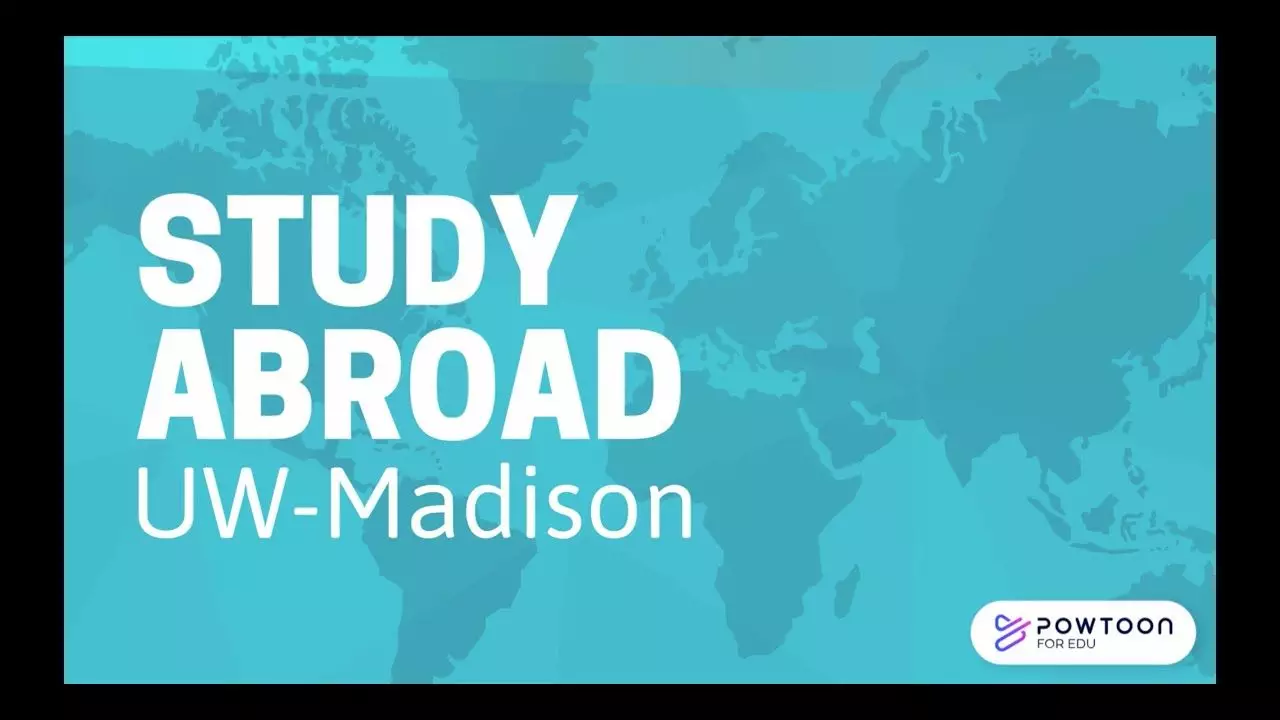
This is a very valid question. I remember at the beginning of my first semester of sophomore year, I had started speaking with friends who were telling me that they were starting to look into program options for studying abroad the following spring.
And I was like, “Um, what? Where do I find this information?!”
Now that I am a veteran with the study abroad process, I can share with you the two main options you have in terms of finding study abroad programs to apply for.
Option one is to do research on the programs that are offered directly through your school. To find these, you can start with a simple Google search such as “[Insert School Name] + study abroad programs”.
For me, since I was in the business school, I knew that I wanted to look at study abroad options that were available directly through the UW-Madison School of Business. So, this is what my initial search looked like (and you can of course modify it to accommodate your major/area of study):
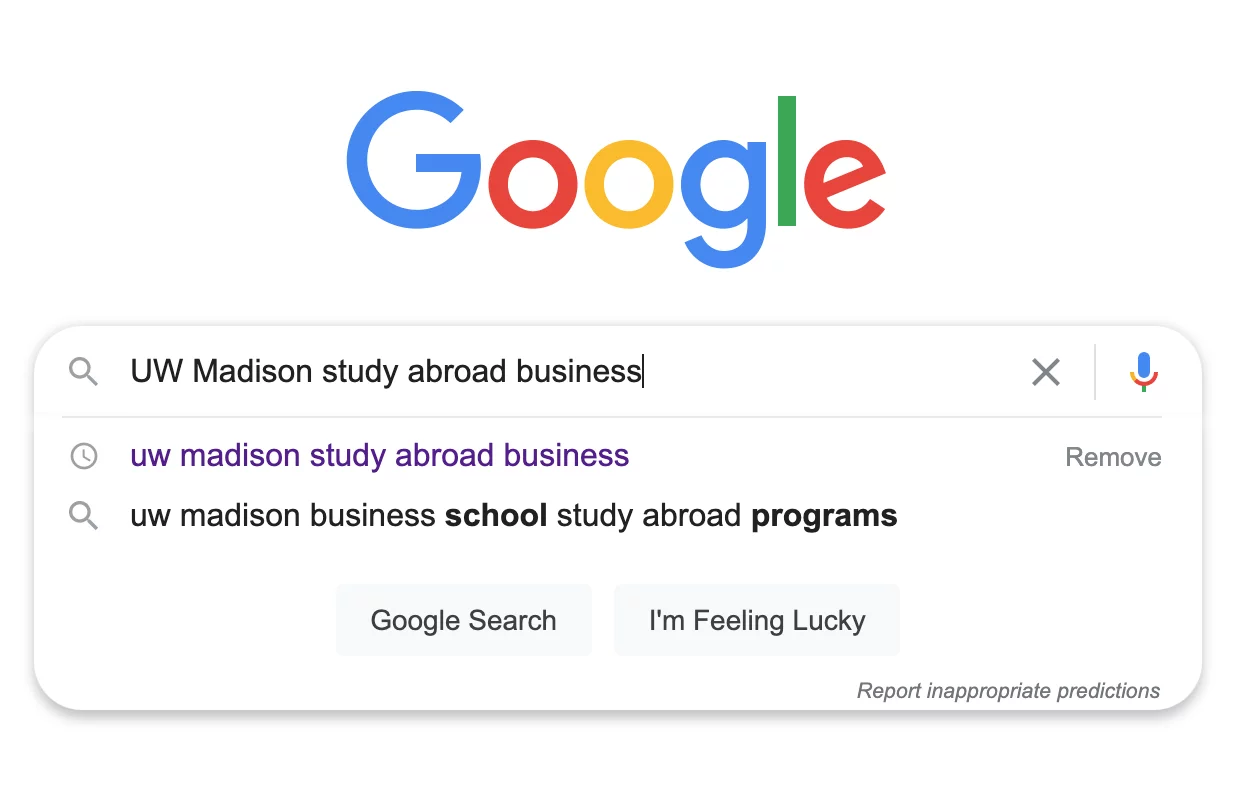
While studying abroad is an experience that will surely enrich your life in many ways outside of just academics, the most important thing that you will want to get squared away is finding a program that is a good fit for you in terms of offering the classes (or equivalents) that you will need to graduate.
The last thing you want is to go abroad for a semester, take a bunch of classes, only to return to find out that none of them translated into valuable credits to put towards your graduation!
One major upside of choosing a program that runs directly through your school (which is what I did) is that you can enroll with a higher level of certainty that the program (and its courses) will translate into valuable credits that you can add towards helping you graduate on time.
Notice though that I said “a higher level of certainty”. I want to be clear that there are programs that might be offered through your school that are not necessarily compatible with your specific area of study and course track.
So, even when you’re researching the programs that are offered through your school, you will need to do some additional research to make sure that the classes that are offered through that specific program will translate into credits that you can use.
If you’re not totally sure about the specifics of a program and whether it is the right fit for you academically/course-wise, my best suggestion is to reach out to the contact or person who is the representative for the program to inquire further.

Option two of places to look for study abroad programs are programs that are outside of your college or university. You can locate these types of programs by just googling “Study Abroad Programs + [insert your major or desired study location].
One example of an external study abroad program is Spanish Studies. They offer programs in Spanish-speaking countries like Spain, Puerto Rico, Cuba, and Argentina.
From my experience, the most common reason why students choose to go this route is when they know that they want to study in a specific location, but their school doesn’t offer its own program to send students there. So if, for example, you really want to study abroad in Argentina, but your school doesn’t have a program that goes there, this is where you would seek out Spanish Studies.
However, my advice if you go this route is to be aware of the extra legwork and potential risks that might come with ensuring that an external program aligns with your academic requirements.

The answer to the question of where you can study abroad is that it depends on which route you go in the section above.
Are you only interested in studying abroad through the programs that are offered by your institution? If so, then your options of where you can go will be limited to those destinations.
Keep in mind though that most school’s study abroad programs will have partnerships with universities in the most popular destinations. So, if you have your heart set on Florence, Italy, and you attend a school with a decently robust study abroad program, the odds are in your favor that you will be able to go there.
Back to the topic at hand! If, conversely, you're okay with researching programs and options that are offered outside of your school then the options are endless!

Now, the question of where you should go is a whole different ball game.
If I was pretending to be a college sophomore and approached anyone I know who studied abroad to ask their opinion of where I should go, chances are, they would say the name of the city that THEY studied in.
What I’m trying to say is that if you start asking around talking to students who have done certain programs, you will most definitely get some biased answers.
So, my advice on how to navigate this process is as follows:

From my experience, the places that were the most popular among the people I knew included England, Ireland, Italy, Spain, France, Australia, Germany, and Israel,
However, I also knew people who went to Argentina, South Africa, Japan, the Czech Republic, and the Netherlands.
I know that a little ways up the page, I told you that you should steer clear of choosing a study abroad destination based on someone else’s opinion because they will likely be biased for any number of reasons.
However, once you have narrowed your list and are looking to choose between a few places, this is a point in which I would actually recommend reaching out to anyone you may know who studied in those places.
When I was doing study abroad research myself, I got coffee with a mutual friend who had studied abroad in Copenhagen, to learn more about his experience living and attending school there, and to get insights on what was great and what wasn't.

In my opinion, there are quite a few benefits of studying abroad apart from the obvious pro of getting to take classes in a new and cool place.
Starting with some of the benefits that I personally can relate to…
When I went abroad to England (through a Wisconsin program), I had a few friends who were on it too, but no one who I was extremely close to. So, there were plenty of days on my program where I took it upon myself to go out solo and explore places that I wanted to see and experience.
If you have any experience using LinkedIn, or if you’ve read my eBook, you probably know about the alumni tool and how cool it is. Being able to add another school to your LinkedIn profile will help you to have a reason to connect with people who work at companies you’re interested in that also attended that school. Plus, if you are ever looking to move/work abroad, having previous abroad experience on your resume/LinkedIn can be helpful.
While I was abroad in London, which is arguably one of the most American-like abroad destinations (especially given that there is no language barrier) I still was able to learn about and adapt to a more European way of life while I was there and traveling around to various countries. I met people in classes who were also international students (but not from America) so that was another cool part of the experience.
Because I was abroad in London on a program that was specific to UW-Madison students, it gave me the opportunity to expand my friend group of people who were actually going to my school back home that I hadn’t even known! If you are like me and you go to a big school, this can be pretty funny and cool.
I know I already mentioned becoming more independent, but with this I mean that by being in a new place, I was more willing to try new foods, explore new places, and adopt new hobbies. Before I went abroad, I didn’t like shopping that much, but now I’m a big thrifter!
One POTENTIAL setback that you might encounter from studying abroad is if the classes that you take while you’re there don’t transfer easily back to your home institution. However, with enough careful research and double-checking, this is something that you can easily avoid.
On top of that, the only other possible setback to studying abroad is that it can be expensive. Similar to the cost of attendance for your home institution, you will have to pay tuition and fees and room and board.
But on top of that, it’s likely that while you’re studying abroad you will want to eat out at restaurants, take part in fun experiences and excursions, and travel around or outside of your country to visit the sites. Unfortunately, these things all cost extra money on top of the normal costs that you would have in a semester.
You definitely don’t want to fly all the way over somewhere only to then figure out that you don’t have any extra money budgeted to spend on enjoying yourself while you’re there. So, before you bite the bullet and sign up for a program, you will want to compare the different program’s costs so you can see which ones fit your budget best.
This leads me to the next common question...
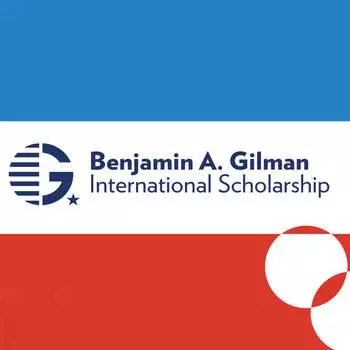
You’ll find that some study abroad programs are more expensive than your home institution, some are cheaper, and some are just about the same. Depending on the amount that you currently pay in tuition, the cost of a program might surprise you in a good way or in a not-so-good way.
According to Education First, most study abroad programs cost between $10,000 and $15,000. However, this doesn’t include things such as flights to and from the destination, meals, and pocket money.
Luckily, to answer the second part of this question, YES! There are tons of scholarship opportunities of all kinds that are available for students who are looking for money to study abroad. A few of the most well-known scholarships that are specific to study abroad include the Boren Awards and The Gilman International Scholarship Program.
Another great source for study abroad scholarships of all kinds is the Fund for Education Abroad. The FEA provides scholarships to US undergraduate students who are least likely to study abroad.
In addition to the scholarships and resources I've already mentioned, there are so many more scholarships out there that you can find by searching through the Access Scholarships database, looking on Google, and of course, doing research on your school’s website to see what scholarships they offer for study abroad.
Other examples of scholarships for study abroad include:
NSCS Scholar Abroad Spring and Fall Awards
George G. Mitchell Scholarship
Overall, in my opinion, studying abroad is a great experience that has a ton of benefits in addition to giving you the opportunity to take classes and study in a different country. While the process itself may not always be straightforward, hopefully, this guide has cleared up some of the major questions that you may have been wondering about the process!
If you’re even slightly curious about or interested in potentially studying abroad at some point during your undergraduate academic career, I highly encourage you to just start by doing some research. This means going onto your school’s website, and reaching out to your academic advisor to see if you can make it align with your goals.
Have questions about studying abroad that I didn’t answer in this guide? Send me an email or DM me on Instagram and we can chat!
Whether you’re a high school student thinking about next steps after graduation, or you’ve been out in the ~real world~ for some time but are considering going back to school to obtain a degree, trade school is one of the many types of degrees out there worth considering. But, with a plethora of options often comes decision fatigue: which option is best for me?
In this post, we’ll dive into one of the many degree options out there - trade school (also referred to as vocational school or technical school) - along with pros and cons, and of course, plenty of scholarship options for trade school students.
Trade school, also commonly known as vocational school or technical school, is a type of post-secondary degree that is obtained in order to become qualified to enter into skilled trades such as cosmetology, HVAC, computer information systems, and construction management.
Trade school programs are often regarded as the more straightforward path from high school into the workforce, mainly because they are typically shorter in length, lasting under 2 years compared to 4 years for a bachelor’s degree. Ultimately, the goal of trade school programs is to teach you the ins and outs of everything that you will need to succeed in your field of choice in as little time as possible so as to get you transitioned into the workforce quickly.

Amount: $1,000
Deadline: Quarterly (December 31, March 31, June 30, September 30)
Eligibility: Open to high school and college students of all years, pursuing all post-secondary degree types, this no essay scholarship is a no-brainer. No minimum GPA required apply.
Amount: $1,000
Deadline: December 31, June 30
Eligibility: Open to high school students of all years in the US (freshmen to seniors) who are planning to obtain any type of post-secondary degree. No transcript required to apply.
Amount: Varies, but usually around $1,000
Deadline: Last day of each month
Eligibility: Open to students ages 13+ who are US residents, planning to pursue any type of post-secondary degree. No essay required!
Amount: $1,000
Deadline: Last day of each month
Eligibility: Open to students ages 13+ who are US residents, planning to pursue any type of post-secondary degree. No essay or minimum GPA required.
Amount: $5,000
Deadline: January 24
Eligibility: Open to high school seniors or current students planning to enroll or are enrolled in full-time undergraduate study at an accredited two-year college or vocational-technical school for the entire upcoming academic year. Must be majoring in a trade construction, industrial, motor/power sector, mechanics, or technology degree/certificate - see the scholarship page for a more comprehensive list of eligible majors.
Amount: Varies
Deadline: February 28
Eligibility: Open to students currently enrolled in a construction-related training program which is approved by the Bureau of Apprenticeship Training, community college, technical school or equivalent.
Amount: $10,000
Deadline: March 27
Eligibility: Open to high school seniors who will be completing a two-year, four-year, or trade/vocational certificate/certification program. Must be pell-grant eligible and demonstrate leadership ability.
Amount: $1,500 - $2,500
Deadline: March 31, September 30
Eligibility: Open to students who are currently enrolled in or entering a certificate or degree program which leads to a manufacturing career on a full-time basis (12 or more credit hours). Minimum 2.5 GPA.
Amount: up to $5,000
Deadline: March 31
Eligibility: Open to high school graduates (with less than a bachelor’s degree) OR high school seniors who are U.S. citizens and are enrolled or planning to enroll part-time or full-time in one of the specified fields of study at an accredited vocational technical school, trade school, two-year community or state college. Fields of study include engineering, advanced manufacturing, and computer and information sciences - see the scholarship page for the full detailed list.
Amount: $1,000 (5 awards)
Deadline: April 15
Eligibility: Open to high school and college students of all years pursuing all degree types. Special consideration will be given to minority students, as well as students who are or will be the first in their family to attend college.
Amount: $5,000
Deadline: May 9
Eligibility: Open to high school seniors who plan to enroll in an accredited vocational-technical or trade school/program for the entire upcoming academic semester/term or year.
Amount: $5,000
Deadline: October 31
Eligibility: Open to students pursuing degrees related to marketing, business, and graphic design - through certification programs, courses, and vocational schools in addition to four-year institutions.
Amount: $2,500
Deadline: December 31
Eligibility: Open to anyone enrolled, or planning to enroll, as a HVAC student in a U.S. trade school or program.
As previously mentioned, there are many pros and cons worth considering when thinking about which type of degree to pursue, and if trade school is the right fit for you. Ultimately, you’ll want to consider factors such as program length, cost, flexibility, and end goal.
If you’re looking for a less costly fast-track into the workforce to start earning money as soon as possible, a trade school degree might be the right path for you.
However, if you’re unsure of your desired career path, committing to a trade or vocational degree might not be right for you, as these programs are typically highly specialized and hands-on in the specific field of choice.
There are a few key differences between a trade school degree, associate’s degree, and a bachelor’s degree.
The first is program length; trade school programs tend to vary in length, ranging from 1-2 years. In comparison, associate’s degrees typically take 2 years to complete and bachelor’s degrees typically take 4 years.
The second major difference is the course offering and end goal, in terms of what field or career you’re hoping to pursue after completion. Trade school degrees aim to equip students with specific technical skills needed for a more specialized career. Compare this to an associate’s or bachelor’s degree, which is usually less hands-on and provides students with a more general education pertaining to a specific area of study, such as marketing, mechanical engineering, or journalism.
Unlike bachelor’s programs, which are selective in terms of which applicants to accept into their programs, trade school programs tend to have fewer barriers to entry in order to pursue. Trade school applicants generally only need to be 16 or 17 years of age, with a high school diploma, in order to apply.
Although there are a few more differences, the final key difference we’ll call out here is cost. Trade school programs tend to be less costly than bachelor’s degrees, partially due to shorter program lengths.
If searching through this post to find scholarships you're eligible for is not really up your alley, take advantage of our scholarship resource posts that organize opportunities by year in school, ethnicity, gender, and more:
Scholarships for College Freshmen
Scholarships for Community College Students
Scholarships for LGBTQ+ Students & Allies
Scholarships for Undocumented Students
Junior year of college is a great time for a number of reasons: you’re finally an upperclassman, you’re (most likely) feeling pretty settled into your classes, and you’re probably also starting to take more classes specific to your area of study. However, getting into the groove of college doesn’t mean you should overlook the importance of continuing to search and apply for all those scholarships for college juniors!
As a college junior, there are still lots of great opportunities out there for you to apply for, through your university as well as through private organizations. Keep reading for our list of over 25 great scholarships for college juniors!
Yes, there are most definitely scholarships out there for college juniors to apply for (hint: keep scrolling for our list!).
Amount: $2,222
Deadline: Last day of each month
Eligibility: Open to all US high school and college students ages 16 and older. All you need to do to apply is create an account!
Amount: $500
Deadline: January 15
Eligibility: Open to all students ages 18 and older in the US (undocumented students and international students in the US may apply!)
Amount: $2,000
Deadline: Quarterly
Eligibility: Open to high school seniors and undergraduate students in the US.
Amount: $1,000
Deadline: Quarterly
Eligibility: Open to high school seniors and undergraduate students in the US, ages 18 and older.
Amount: Varies, but usually $1,000 - $2,500
Deadline: Continuous
Eligibility: Open to all students in the US ages 26 and under!
Amount: $2,500
Deadline: Monthly
Eligibility: Open to all students 13 and older!
Amount: Varies, but it's usually between $1,000 and $2,500!
Deadline: Last day of each month
Eligibility: Open to high school, college, and graduate students in the US.
Amount: up to $25,000
Deadline: January 11
Eligibility: Open to students (ages 16-26) who are passionate about creating a better future and making a positive impact on their community.
Amount: $1,000
Deadline: January 30
Eligibility: Open to students in high school, college, and graduate school. Must be a US citizen/resident to apply.
Amount: Varies
Deadline: February 15
Eligibility: Open to college students (sophomores and above) who identify as a female/woman and pursue an ABET-accredited bachelor or graduate student program in preparation for careers in engineering, engineering technology, and computer science. International students may apply.
Amount: up to $30,000
Deadline: March 18
Eligibility: Open to current college sophomores and juniors of Latin or Hispanic origin who are from Northern California and currently enrolled in STEM degree programs.
Amount: Varies
Deadline: March 31
Eligibility: Scholarships for students enrolled full-time and attending UNCF-member Institutions. Must have a demonstrated financial need. Minimum 2.5 GPA required.
Amount: up to $5,000
Deadline: April 1
Eligibility: Open to all students who are US residents who are attending a post-high school institution full-time. This could be a community college, an undergraduate college or university, or a graduate school in the U.S.
Amount: $10,000
Deadline: April 18
Eligibility: Open to Black and African American full-time college freshmen, sophomores, juniors, seniors, and graduate students pursuing degrees in cybersecurity or information assurance. GPA must be at least 3.2 on a 4.0 scale.
Amount: $5,000
Deadline: April 20
Eligibility: Open to underrepresented and economically disadvantaged undergraduate students who are pursuing degrees in illustration, photography, and communication design disciplines at colleges and universities in the United States. Minimum 2.0 GPA.
Amount: $2,500
Deadline: May 1
Eligibility: Open to high school seniors as well as college freshmen, sophomores, and juniors who are US residents. Must have at least a 3.0 GPA.
Amount: $3,000
Deadline: July 30
Eligibility: Open to undergraduate and graduate students in the US. Minimum 3.0/4.0 GPA.
Amount: $500 - $1,000
Deadline: September 1
Eligibility: Open to all high school and college students in the US, including DACA recipients. Students who identify as part of a minority or who are or will be first-generation college students are encouraged to apply.
Amount: up to $5,000
Deadline: November 10
Eligibility: Open to Asian/Pacific Islander students enrolled in full-time undergraduate degree programs. Must be US citizens with financial need. Preference is given to students living at or below the poverty level, as well as to students who are first-generation college students.
Amount: $2,000
Deadline: November 12
Eligibility: Open to African American nursing students (junior or senior level standing) enrolled at Mississippi colleges and universities.
Amount: N/A
Deadline: November 15
Eligibility: Open to Black non-cis-male creatives currently enrolled in college (sophomore or higher). Must be interested in pursuing a career as an art director, copywriter, UX designer, or strategist.
Amount: $1,000
Deadline: November 15
Eligibility: Open to undergraduate juniors and seniors, as well as graduate students, pursuing education-related majors to become elementary school teachers.
Amount: $2,000
Deadline: December 1
Eligibility: Open to high school seniors and undergraduate students. Undocumented students and international students in the US are also eligible to apply.
Amount: Full-tuition!
Deadline: December 13
Eligibility: Open to high school seniors and current undergraduate women pursuing a STEM degree (science, technology, engineering, math).
Let’s set the scene - you’re a high school student with college just around the corner. You’ve started to dig into the research phase of your journey, which naturally leads you to come across the fact that there are many different types of schools out there for you to explore. Some are big, some are small. Some focus on specific areas of study, while others offer every degree option under the sun.
In a prior blog post, I covered a group of schools known as the Big 10, and you’ve probably heard of another group of schools known as the Ivy League. In this blog post, I’m going to tell you everything you need to know about another sub-sect of institutions, known as the public ivy league schools of the US.
Public ivy league schools, aka “public ivies” are a group of US colleges and universities that are known for being particularly prestigious, academically rigorous, and selective.
The term “public ivy league schools” was coined in 1985 by Richard Moll, a former undergraduate admissions officer at Yale and rose in popularity after the release of his book The Public Ivys: A Guide to America's Best Public Undergraduate Colleges and Universities. At the time the book was published, Mott highlighted 15 public universities that he believed met the following criteria:
The initial 15 schools that made Mott’s list of public ivy league schools were:
Despite the “legit” list of public ivies comprising 15 institutions, Mott also went so far as to create a second list of schools that he believed were almost worthy of making the legit list but didn’t quite meet all of the qualifications. Here are the 9 schools on Mott’s secondary list of public ivy league schools:
Attending a public ivy probably seems enticing right off the bat (I mean, who isn’t enthralled by the idea of attending a school that’s been recognized for its excellence?). However, there are lots of other reasons why you may want to consider learning more about, applying to, and maybe even attending one of America’s public ivy league schools.
First off, the schools on both lists have reputations of academic excellence across the board, with the majority of them also offering honors programs for the highest achieving students. Second, in addition to being known for their academic excellence, many of these schools are known for their athletic excellence as well.
Additionally, if you’re looking for a well-known school that also falls into the realm of being somewhat cost-effective (particularly if you’re looking at in-state options), the public ivies also tend to check both of these boxes in comparison to schools of similar prestige, making them a dependable and attractive choice for prospective college students.
Both sets of schools have the word “ivy” in the name, however, there are several key differences between them that you should be aware of as you continue to embark on your college research and application journey.
As I briefly mentioned above, public ivy league schools are commonly referred to as a more cost-efficient option in comparison to their private ivy league counterparts, especially when it comes to in-state tuition. To look at this a little deeper, in the chart below, I compiled the 2022-23 in-state and out-of-state tuition costs for 5 ivy schools in each bucket, public and private.
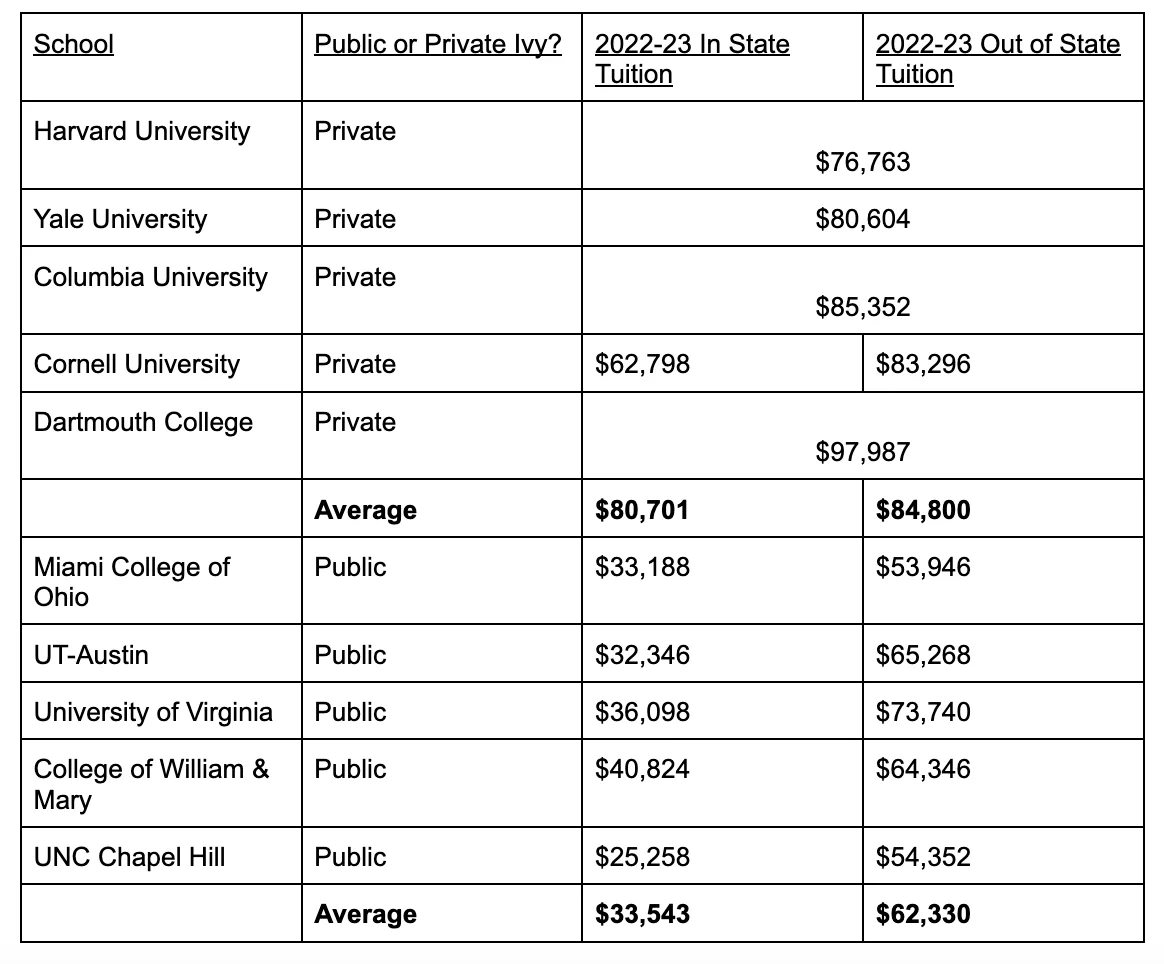
The first thing you may notice is that the majority of the private ivy league schools highlighted only have one tuition rate for both in-state and out-of-state students.
When comparing the tuition rates for private ivy league schools and public ivy league schools, you’ll surely notice that the difference is a significant one: the average “in-state” tuition at a private ivy comes in at just over $80,000, meanwhile the average in-state tuition at a public ivy is around $33,500.
The difference in cost is smaller, yet still quite significant, when comparing out-of-state rates. The only caveat that I think is worth mentioning when discussing and comparing costs is that most private ivy league schools have special offers for students whose annual family income falls below a certain number. For some schools, that number is $65,000, for others it’s slightly higher.
So, while the overall difference in cost between private and public ivy league schools appears to be a large one, keep in mind that private ivies are known for special financial aid offerings for students who meet certain criteria.
Next up is size! Going back to our chart with 5 example schools in each category…
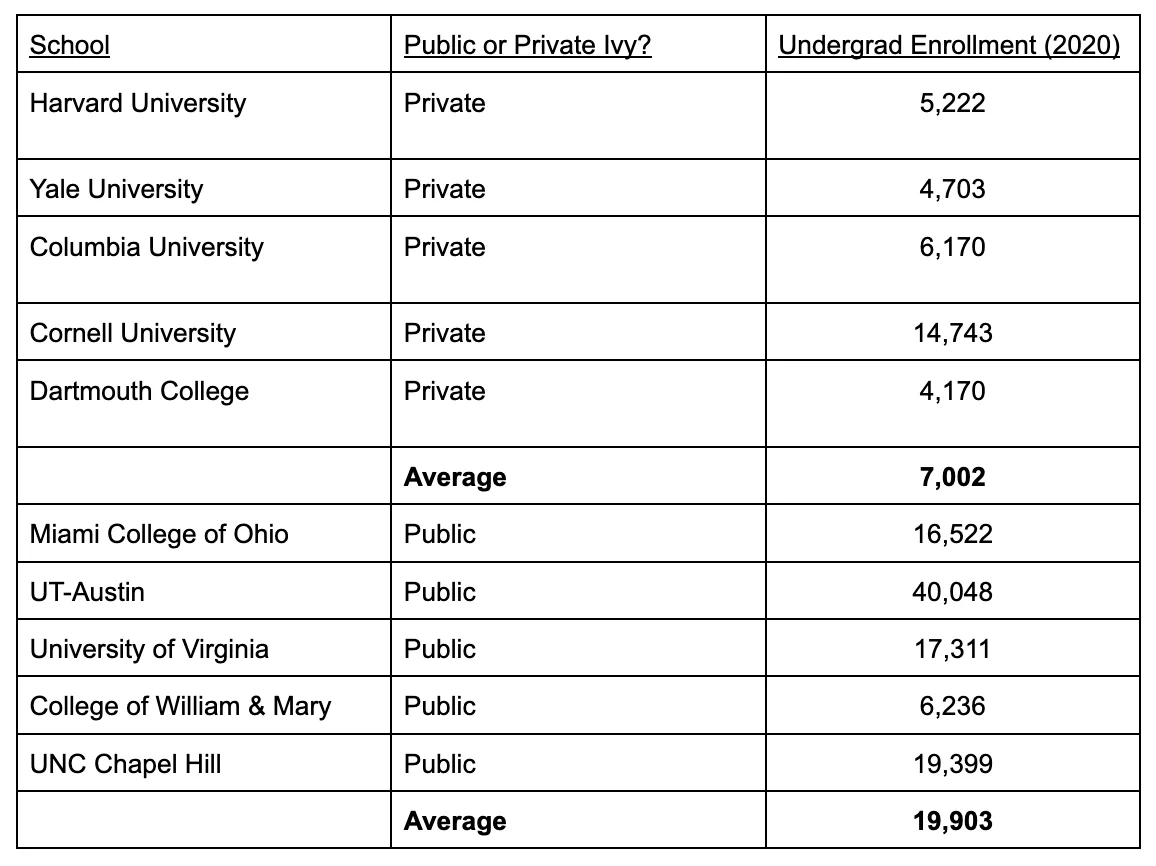
You’ll notice that the average size of a private ivy is much, much smaller than the average size of a public ivy. (Source: US News)
Finally, when it comes to selectivity, the private ivy league schools of the US take the cake as being some of the notoriously most selective schools in the country, with an average acceptance rate of around 9%.
While the public ivies can also be selective in their admissions (they are the public ivies after all!), you’ll notice in your research that admissions rates vary widely among public ivy league schools.
As I stated in my blog post on Big 10 Schools, it’s difficult to answer this question because there are so many public ivy league schools, and each one is different in its programs, student culture, and overall offerings!
However, to help you in your college research/application/admissions journey, here are a few questions I suggest you ask yourself. Once you’ve answered them, you will have a nice, structured “guide” to refer to as you continue to research colleges, including those public ivy league schools!
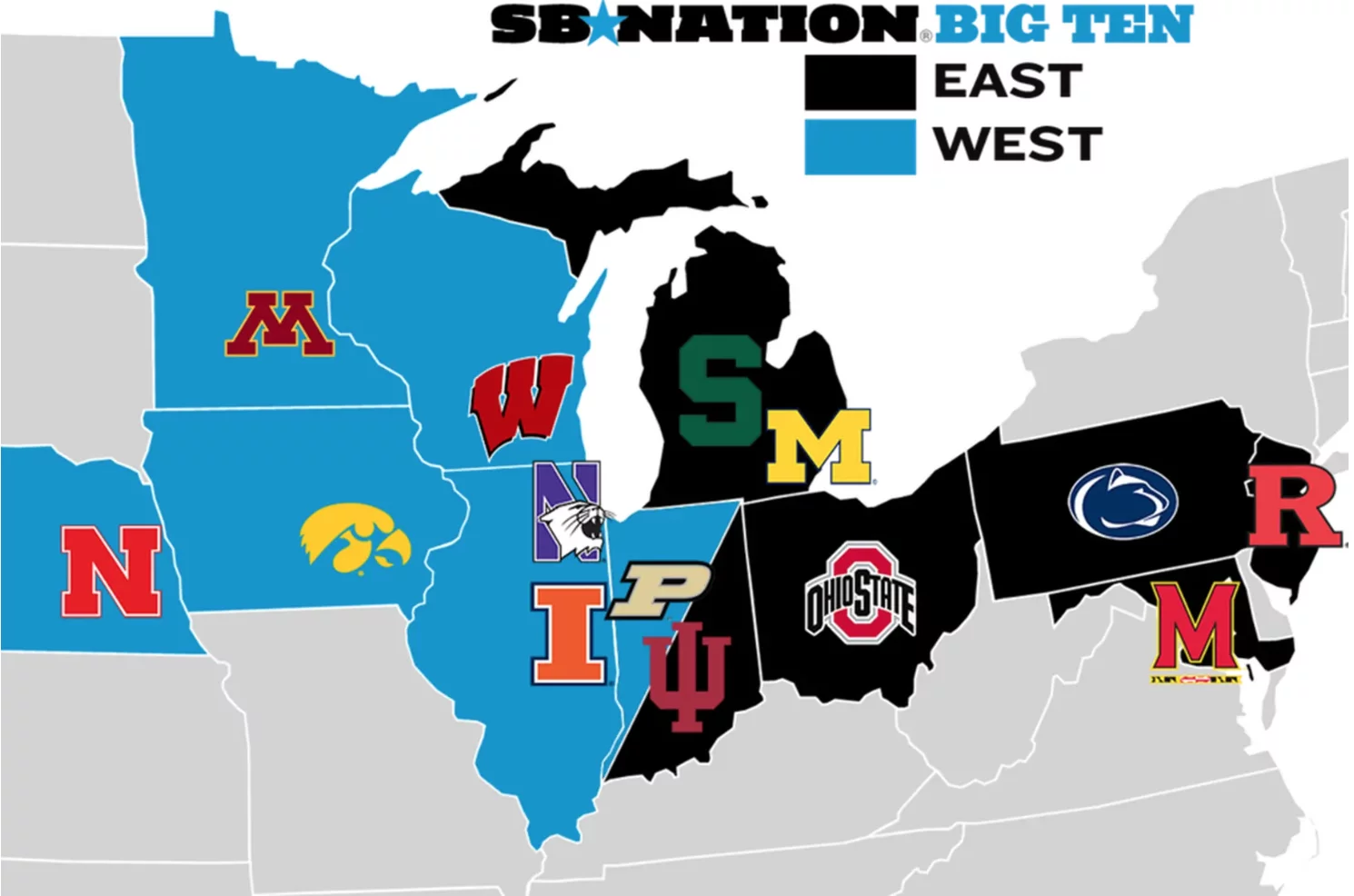
The process of researching colleges, building a school list, and narrowing down which schools to apply to can be a stressful one (believe me, I’ve been there and done that!). Regardless of whether you’re already in college, or you’re a high school junior or high school senior thinking about college just around the corner, you’ve probably heard the term “Big 10 schools” thrown around in conversations about higher education.
But what does it mean?
The Big 10 is a conference of US universities that are most commonly known for their competitive athletic programs and a true sense of “bigness” that tends to yield an abundance of school spirit and pride.
Which schools make up the Big 10 conference? Here’s the full list of Big 10 schools:
Big 10 schools, because of their sheer size and student population, truly operate with the “go big or go home” mentality; each school in the conference boasts hundreds of course options across a wide variety of majors, along with dozens upon dozens of student organizations, campus activities, and overall possibilities!
In this next section, I’ll dive into all 14 of them, including basic information and how you can learn more if you’re interested in applying. (PS - don’t even get me started on why there are now 14 when it’s the Big 10!)
Anyways, are you ready? Here we go!
Location: Madison, Wisconsin
-Acceptance rate: 57%
-Average annual cost: $17,234
-Number of undergraduate students: ~31,700
-Graduation rate: 87%
-Fun fact: There is a tradition every winter where the two opposing dorm locations (Southeast and Lakeshore) have an epic snowball fight.
Learn more about applying to UW-Madison.
Location: Bloomington, Indiana
-Acceptance rate: 80%
-Average annual cost: $14,619
-Number of undergraduate students: ~32,600
-Graduation rate: 79%
-Fun fact: IU faculty have been awarded every major national and international prize including the Nobel Prize, Pulitzer Prize, Oscar Award and Emmy Award, as well as major research grants from the National Science, Ford, Guggenheim, Rockefeller and MacArthur foundations.
Learn more about applying to IU!
Location: College Park, Maryland
-Acceptance rate: 51%
-Average annual cost: $18,048
-Number of undergraduate students: ~30,200
-Graduation rate: 83%
-Fun fact: Parts of both National Treasure: Book of Secrets and St. Elmo’s Fire were filmed there.
Learn more about applying to UMD!
Location: Ann Arbor, Michigan
-Acceptance rate: 26%
-Average annual cost: $14,878
-Number of undergraduate students: ~31,100
-Graduation rate: 92%
-Fun fact: Their football stadium is the second largest stadium in the world!
Learn more about applying to UMich!
Location: Iowa City, Iowa
-Acceptance rate: 84%
-Average annual cost: $19,401
-Number of undergraduate students: ~22,000
-Graduation rate: 72%
-Fun fact: In 1855, the university became the first public university in the United States to admit men and women on an equal basis.
Learn more about applying to the University of Iowa!
Location: Lincoln, Nebraska
-Acceptance rate: 78%
-Average annual cost: $17,013
-Number of undergraduate students: ~20,100
-Graduation rate: 66%
-Fun fact: Their mascot is the corn husker!
Learn more about applying to the University of Nebraska!
Location: Columbus, Ohio
-Acceptance rate: 68%
-Average annual cost: $16,845
-Number of undergraduate students: ~45,900
-Graduation rate: 77%
-Fun fact: In 1926 the student body elected a cow, Maudine Ornsby, to be its Homecoming Queen.
Learn more about applying to OSU!
Location: New Brunswick, New Jersey
-Acceptance rate: 67%
-Average annual cost: $23,035
-Number of undergraduate students: ~35,400
-Graduation rate: 81%
-Fun fact: It is the birthplace of college football - in 1869 they beat Princeton in what is believed to be the first ever college football game.
Learn more about applying to Rutgers!
Location: University Park, Pennsylvania
-Acceptance rate: 78%
-Average annual cost: $27,530
-Number of undergraduate students: ~73,200
-Graduation rate: 71%
-Fun fact: Ben Cohen & Jerry Greenfield (Ben & Jerry’s) Took An Ice Cream-Making Class At Penn State before creating the company.
Learn more about applying to PSU!
Location: East Lansing, Michigan
-Acceptance rate: 81%
-Average annual cost: $19,058
-Number of undergraduate students: ~38,400
-Graduation rate: 76%
-Fun fact: MSU students could cover all 4 years of undergrad with only $30 from 1862 to 1865.
Learn more about applying to MSU!
Location: Evanston, Illinois
-Acceptance rate: 9%
-Average annual cost: $23,279
-Number of undergraduate students: ~8,400
-Graduation rate: 95%
-Fun fact: Lowest (by a lot!) acceptance rate out of all the Big Ten Schools.
Learn more about applying to Northwestern!
Location: West Lafayette, Indiana
-Acceptance rate: 67%
-Average annual cost: $13,377
-Number of undergraduate students: ~35,500
-Graduation rate: 75%
-Fun fact: Has its own airport - It is the first university-owned airport in the U.S.
Learn more about applying to Purdue!
Location: Minneapolis, Minnesota
-Acceptance rate: 70%
-Average annual cost: $17,878
-Number of undergraduate students: ~30,900
-Graduation rate: 80%
-Fun fact: The honeycrisp apple was developed at their horticulture center in 1974.
Learn more about applying to the University of Minnesota!
Location: Champaign, Illinois
-Acceptance rate: 63%
-Average annual cost: $14,321
-Number of undergraduate students: ~33,000
-Graduation rate: 86%
-Fun fact: Steve Chen and Jawed Karim, the founders of YouTube, are both Illinois alumni.
Learn more about applying to U of I!
Source for stats: College Scorecard
In the section above, I provided small informational tidbits about each of the Big 10 schools, with the hopes that you’ll head over to each school’s website to learn more if any of them catch your eye!
Ultimately, the process of deciding which colleges to apply to is a tough one. It requires you to do a significant amount of logistical research (looking at factors such as course options, cost, likelihood of acceptance, etc), but it also requires you to do some internal exploration along the way to help you narrow down which schools might be a good fit for you.
To help you out with that internal exploration, here are a couple of key questions I recommend you ask yourself (and answer!):
Ultimately, it’s difficult to provide a clear-cut answer on if the Big 10 schools are for you, or if they aren’t - this is something you’ll find out for yourself as you start or continue along your journey of researching schools, building a list, and learning more about yourself!
Although most of the Big 10 schools are similar in terms of having high levels of athletic and school spirit as well as large student bodies, at the end of the day, each one has its own unique programs, quirks, and offerings.